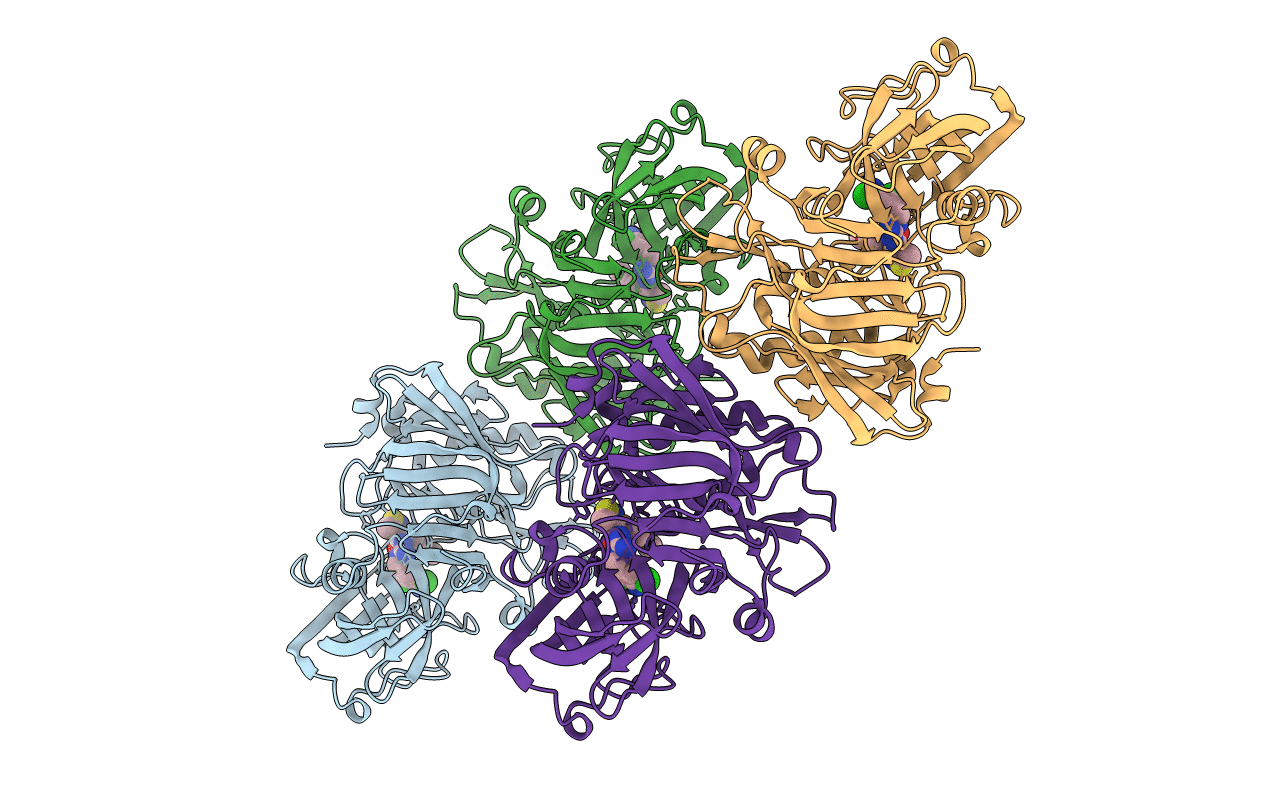
Deposition Date
2012-06-27
Release Date
2012-10-10
Last Version Date
2024-11-27
Entry Detail
PDB ID:
4FSE
Keywords:
Title:
crystal structure of beta-site app-cleaving enzyme 1 (bace-wt) complex with N-(N-(4-amino-3,5- dichlorobenzyl)carbamimidoyl)-3-(4-methoxyphenyl)-5- methyl-4-isothiazolecarboxamide
Biological Source:
Source Organism:
Homo sapiens (Taxon ID: 9606)
Host Organism:
Method Details:
Experimental Method:
Resolution:
2.65 Å
R-Value Free:
0.26
R-Value Work:
0.21
R-Value Observed:
0.21
Space Group:
P 1 21 1


